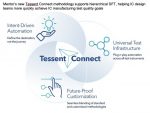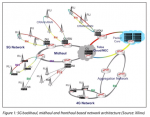Autonomous vehicle progress is in the daily news, so it’s quite exciting to watch it develop with the help of SoC design, sensors, actuators and software from engineering teams spanning the entire globe. Tesla vehicles have reached Level 2 autonomy, Audi e-tron is at Level 3, and Waymo nearly at Level 5 with robot taxis being… Read More
MEMS Actuation and the Art of Prototyping
I mentioned a while back that I’m really getting into the role that sensors play in our new hyper-connected world – in the IoT, intelligent cars, homes, cities, industry, utilities, medicine, agriculture, etc, etc. If we can think of a way to sense it and connect it, someone is probably already doing it. But there’s more to … Read More
Mentor unpacks LVS and LVL issues around advanced packaging
Innovations in packaging have played an important role in improving system performance and area utilization. Advances like 2.5D interposers and fan-out wafer-level packaging (FOWLP) have allowed mixed dies to be used in a single package and have dramatically reduced the number of connections that need to go all the way to the… Read More
ITC shines light on new Mentor Test announcements
The 50th International Test Conference was just held in Washington DC, where papers, sessions, workshops and announcements addressing the increasing complexity and expanding use of semiconductors showed that innovations in test are crucial to design and product success. Test methodologies and even the scope of test have … Read More
Calibre Commences Cloud Computing
Calibre was a big game changer for DRC users when it first came out. Its hierarchical approach dramatically shortened runtimes with the same accuracy as other existing, but slower, flat tools. However, one unsung part of this story was that getting Calibre up and running required minimal effort for users. Two things are required… Read More
WEBINAR: PAVE360 Validating Autonomous Vehicle Behavior
Siemens Mentor recently announced PAVE360™, a very cool comprehensive pre silicon simulation environment. Autonomous cars are very popular here in Silicon Valley and quite safe on the highways since the average speed is 25mph (horrible traffic). In the city you need autonomous parking unless you want to waste precious time … Read More
Virtualizing 5G Infrastructure Verification
Mentor have pushed the advantages of virtualized verification in a number of domains, initially in verifying advanced networking devices supporting multiple protocols and software-defined networking (SDN), and more recently for SSD controllers, particularly in large storage systems for data centers. There are two important… Read More
Mentor’s Questa verification tools now run on 64-bit ARM based servers
The server market has been undergoing changes in the last few years. The traditional go-to for server processors had been x86 based chips from Intel or AMD. However, if you go on Amazon AWS looking for EC2 instances, you will see the “A1” instance type, which is an ARM based instance. This is not what you might think at first. The A1 instance… Read More
AI Hardware Summit, Report #2: Lowering Power at the Edge with HLS
I previously wrote a blog about a session from Day 1 of the AI Hardware Summit at the Computer History Museum in Mountain View, CA, held just last week. From Day 2, I want to delve into this presentation by Bryan Bowyer, Director of Engineering, Digital Design & Implementation Solutions Division at Mentor, a Siemens Business.… Read More
Virtually Verifying SSD Controllers
Solid State Drives (SSDs) are rapidly gaining popularity for storage in many applications, in gigabytes of storage in lightweight laptops to tens to hundreds of terabyte drives in datacenters. SSDs are intrinsically faster, quieter and lower-power than their hard disk-drive (HDD) equivalents, with roughly similar lifetimes,… Read More










